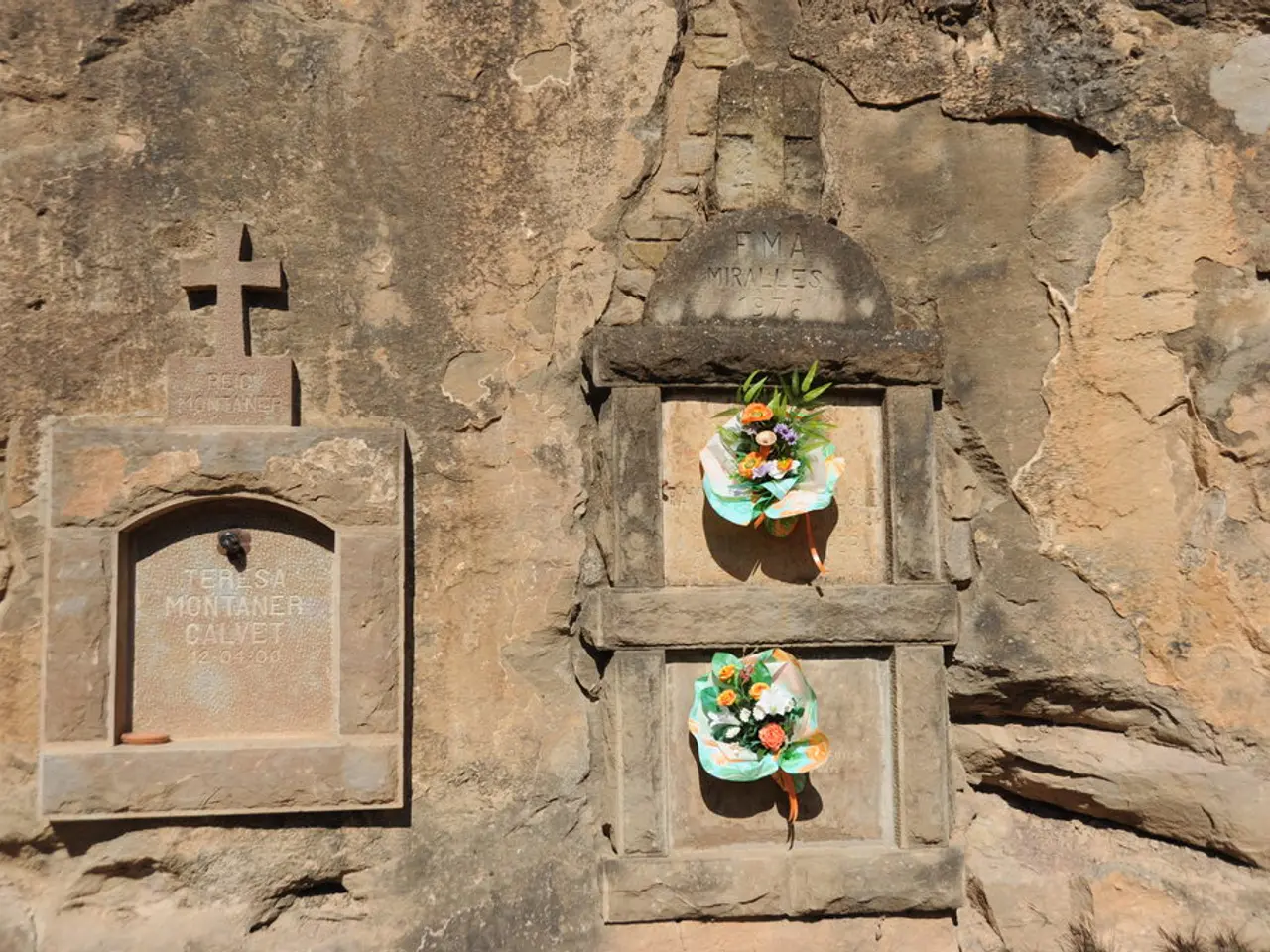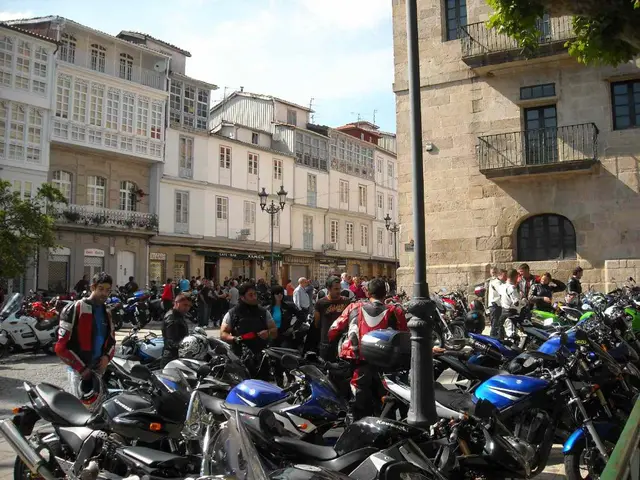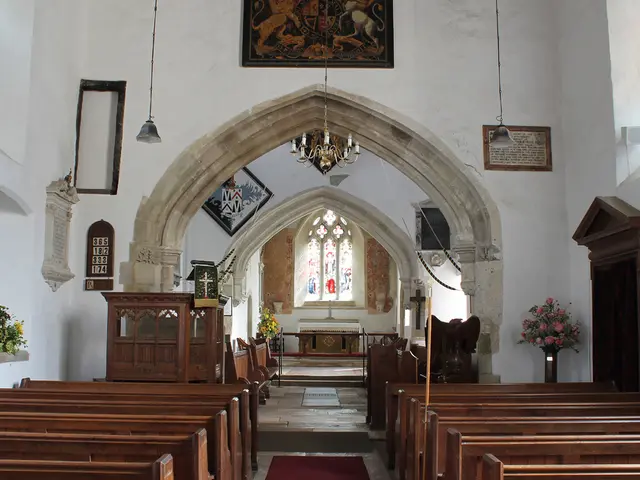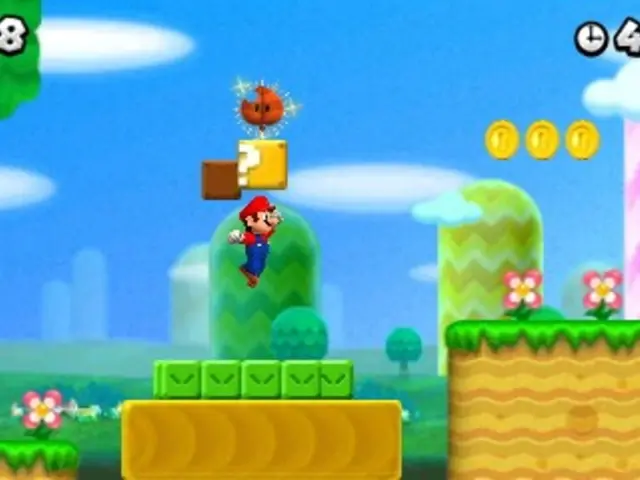Renovated Hohenzollern Crypt to be unveiled in the year 2026 - Following the renovation, Hohenzollern will be re-opened in the year 2026.
The Berlin Cathedral, a renowned Protestant church located on Museum Island in Berlin, is currently undergoing its most extensive renovation since the end of World War II. Known for its striking Renaissance and Baroque revival architecture, the cathedral is not only the largest Protestant church in Germany but also the second largest in the world.
One of the cathedral's most significant features is the Hohenzollern Crypt, a burial site located beneath the church. Dating back to as early as 1595, the crypt is the resting place of many members of the former ruling family of Prussia, the Hohenzollerns. Recognized as one of the most important dynastic tombs in Europe, the crypt offers a solemn yet fascinating glimpse into European dynastic history.
The ongoing renovation aims to preserve the crypt's historical significance while enhancing access for visitors. The renovation will include the installation of an elevator for barrier-free access, the return of the currently stored coffins in the fall, and the addition of a new air conditioning system to mitigate the impact of increasing visitors on the crypt's climate.
The Hohenzollern Crypt serves as the central burial site of the former imperial house, with members of the House of Hohenzollern, such as the first King of Prussia, Frederick I, and his wife Sophie Charlotte, usually resting there. The crypt is said to be one of the largest burial sites in Europe, with approximately 91 coffins from five centuries, including about half being children's coffins due to the high infant mortality rate at the time.
In addition to preserving the crypt, the renovation aims to create a reverent atmosphere. The renovation is being co-financed by the federal government and the state of Berlin, with the cathedral itself contributing approximately 9.3 million euros to the Hohenzollern Crypt renovation, which is about 12 million euros more than originally assumed.
The renovation also includes the restoration of the cathedral's stunning interior decorations, unique architectural elements like the Grand Dome, and the maintenance of the cathedral's large pipe organ, one of Europe's largest. A new exhibition will inform visitors about burial rituals in the Hohenzollern Crypt, providing insights into the history and significance of this remarkable site.
It is worth noting that Wilhelm II, the last German emperor, was not buried in the Hohenzollern Crypt; instead, he is buried in a mausoleum in the Netherlands. The House of Hohenzollern ruled Prussia from the 18th century and the German Empire after the founding of the German Reich in 1871.
The Berlin Cathedral plans to reopen the Hohenzollern Crypt at the beginning of 2026, ensuring that this vital religious, cultural, and historical landmark continues to be preserved for future generations. With the renovation, the cathedral will maintain its role as a beacon of religious, cultural, and historical significance in Berlin.
References: [1] Berliner Dom. (n.d.). Retrieved from https://www.berliner-dom.de/ [2] Berlin Cathedral. (n.d.). Retrieved from https://en.wikipedia.org/wiki/Berlin_Cathedral [3] Hohenzollern Crypt. (n.d.). Retrieved from https://en.wikipedia.org/wiki/Hohenzollern_Crypt [4] Inside the Berlin Cathedral. (2018, September 14). Retrieved from https://www.berlin.de/en/travel-and-tourism/sights-and-attractions/berlin-cathedral-berliner-dom-1325404-489345.en.html [5] Berlin Cathedral. (2022). Retrieved from https://www.berliner-dom.de/en/the-cathedral/the-cathedral-organ-berliner-dom-orgel/
The community could consider implementing a policy that encourages vocational training programs for its members, especially in home-and-garden related fields, to help enhance their lifestyle skills and contribute to the upkeep of their homes. A vocational training institution could offer courses on topics such as carpentry, gardening, plumbing, and decoration, which could empower individuals to take charge of maintaining the aesthetics and functionality of their living spaces.








